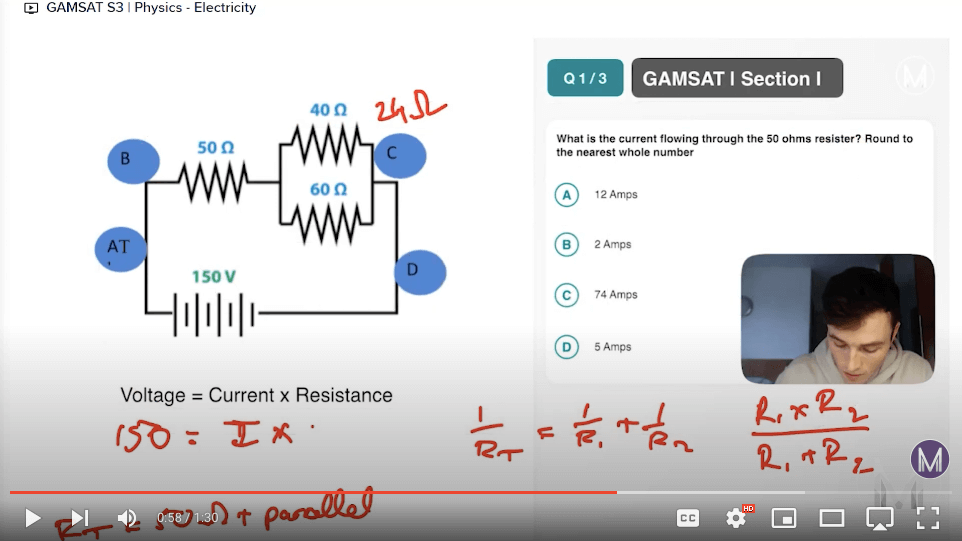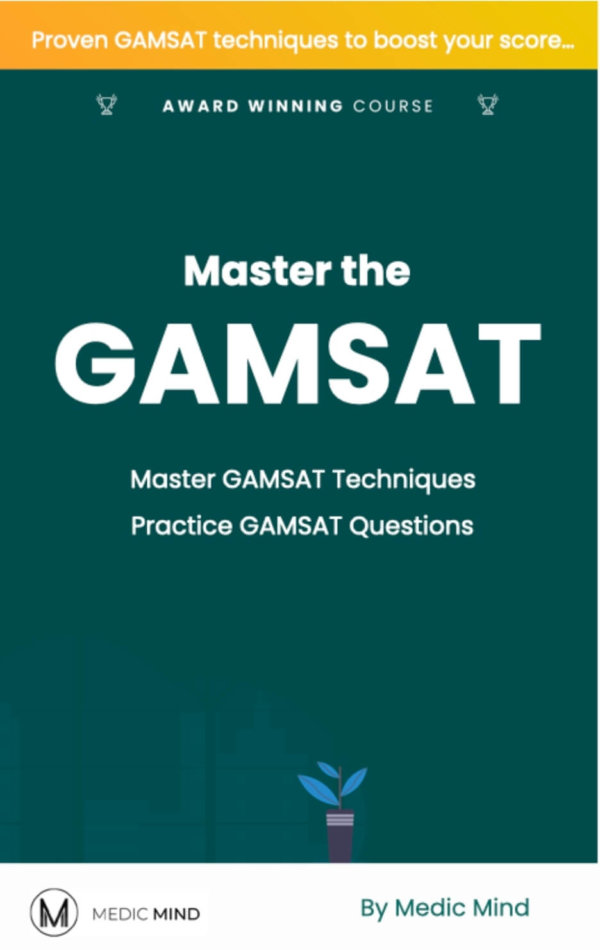Loading...

Guide to GAMSAT Section 1 Non-Fiction Questions
Section 1 of the GAMSAT is composed of many different types of passages. Here is a guide to answering non-fiction questions. These can be either non-fiction articles, essays or social science passages. Follow this and check out our online video tutorial course to achieve high marks in section 1 of the GAMSAT!

GAMSAT Non-Fiction Article Questions
Non-fiction articles commonly arise in section 1 of the GAMSAT. They can come from a range of sources, including scientific journals, newspapers and magazines. As with other long passages in section 1, increasing your reading speed is crucial. The best way to do this is to read as much as you can in your spare time, whether it’s a novel, a blog or a magazine!
Certain articles such as scientific journal abstracts tend to have a set structure. This can make it easier to pinpoint where an answer lies within the text. For example, if asked for the conclusion of a study, this will tend to lie at the end of an abstract. Whereas methods and results will be in the middle of the passage.
For more tips and worked sample GAMSAT questions, check out our online GAMSAT course. We provide online video tutorials for each of the different questions types in section 1 to ensure you aces section 1 of the GAMSAT!
GAMSAT Non-Fiction Essay Questions
Non-fiction essays tend to be easier to interpret compared to other types of passages. This is due to the fact that they’re non-fiction and will therefore not contain any hidden meanings or ambiguity. They rely on the reader to pay close attention to every specific detail.
Therefore the most important thing for you to do is fully read the text before answering the questions. Try to make a mental model of the layout of the essay and remember the main points of each paragraph. This will allow you to quickly refer back to the text whilst answering the non-fiction essay questions in section 1 of the GAMSAT.
These tend to be long passages so increasing your speed of reading will lead to significant improvement. Try to increase the amount of reading you do in your spare time, whether it’s a novel, a newspaper or even a magazine!
For worked through examples and more tips on how to ace Section 1 of the GAMSAT, check out our online GAMSAT course here!
GAMSAT Non-Fiction Social Sciences Questions
Non-fiction social science passages are quite common in section 1 of the GAMSAT. These passages can be quite long and usually based on philosophical, historical or political ideas. You should prepare for these types of questions as you would any other long passage in section 1. A way to improve your answering is to read philosophy and political texts. The language can be quite specific and therefore exposing yourself to as many of these texts as possible is sure to increase your ability to interpret them!
These can also involve abstracts from journals which as discussed in non-fiction articles, tend to follow a specific structure. This makes it easier to identify where an answer might lie within the text. For example, the outcome or results will usually be towards the end of the abstract.
As with all aspects of the GAMSAT, practising questions is essential and the easiest way to improve! Check out our online video tutorial course for worked examples and tips to acing each of the question types in section 1 of the GAMSAT!

Frequently Asked Question
→What is the format of GAMSAT Section 1 Non-Fiction Questions?
GAMSAT Section 1 Non-Fiction Questions consist of a series of passages, each followed by a set of questions. The passages may cover a wide range of topics, including science, history, politics, and social issues. The questions may be in a variety of formats, including multiple choice, true/false, and short answer.
→What are GAMSAT Section 1 Non-Fiction Questions?
GAMSAT Section 1 Non-Fiction Questions are a part of the first section of the Graduate Australian Medical School Admissions Test (GAMSAT). In this section, candidates are presented with a series of non-fiction passages and are required to answer questions based on the information presented in the passages.
→How can I prepare for GAMSAT Section 1 Non-Fiction Questions?
To prepare for GAMSAT Section 1 Non-Fiction Questions, it is important to practice reading and analyzing non-fiction passages. Candidates should also practice answering questions based on the information presented in the passages. There are many resources available to help with GAMSAT preparation, including study guides, practice tests, and online courses.
→What are some tips for answering GAMSAT Section 1 Non-Fiction Questions?
Some tips for answering GAMSAT Section 1 Non-Fiction Questions include: reading the passage carefully and thoroughly, identifying the main ideas and arguments presented in the passage, paying attention to the tone and style of the writing, and using evidence from the passage to support your answers.
→What is the purpose of GAMSAT Section 1 Non-Fiction Questions?
The purpose of GAMSAT Section 1 Non-Fiction Questions is to assess candidates’ ability to read and comprehend complex written material, as well as their ability to reason and analyze information presented in the passages. These skills are important for success in medical school and in a medical career.
→What is the importance of GAMSAT Section 1 Non-Fiction Questions in the overall GAMSAT score?
GAMSAT Section 1 Non-Fiction Questions account for 40% of the overall GAMSAT score. Therefore, it is important to perform well on this section in order to achieve a competitive score and increase your chances of being accepted into a medical school program.
Related
Related
Personalised 1-1 private lessons, tailored to your GAMSAT needs
With over 1000 GAMSAT questions, worked examples and mock run-throughs - your complete GAMSAT course!
Prepare for the GAMSAT with a full day of expert GAMSAT tuition, learning the tips and tricks to boost your score to the maximum.





Was this article helpful?
Still got a question? Leave a comment
Leave a comment